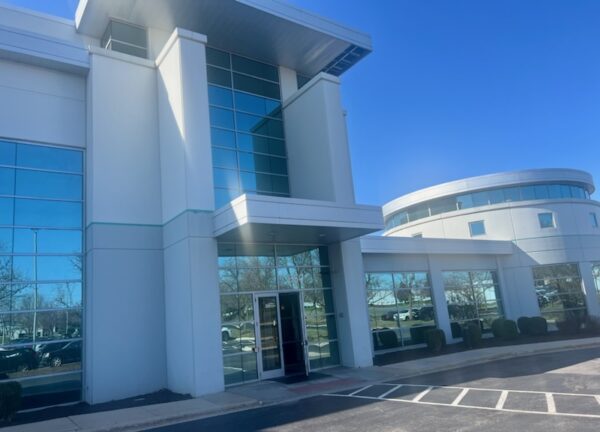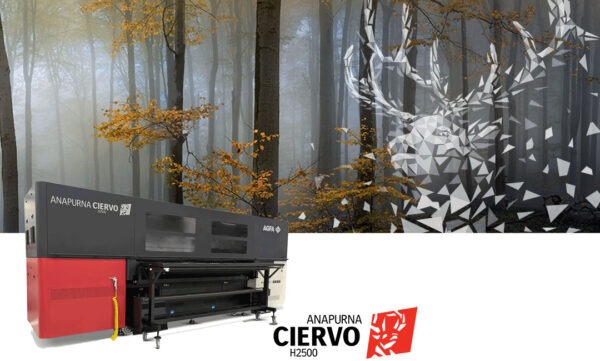It’s time for dealers to reexamine their preconceptions about the viability of these higher-end product segments.
Few understand opportunities in production and industrial print like Frank Mallozzi. After many years in the industry, including 25 years in senior management roles at EFI, Mallozzi has started his own consulting business.
Center Research Group is a consultancy focused on helping companies design and develop go-to-market growth strategies, execute strategic plans, and optimize marketing efficiencies while increasing sales productivity. The group uses proven methods to build differentiated sales, marketing, and service organizations.
While his practice extends beyond the office technology dealer channel, he places significant focus on that market segment, leveraging his years of industry experience and expertise in sales, marketing, and strategic planning. In this interview, he shares his thoughts and advice regarding growth strategies for the office technology dealer channel to counteract a contracting market by engaging in production and industrial print.
CR: Let’s start with a bit of background on your career and how Center Reasearch Group came about.
Mallozzi: As you know, I retired from EFI back in January and took some time to think about the next steps. With all the years I had in the office equipment channel, including the last 25 years evolving EFI into industrial segments, I decided to open up the Center Reach Group. I’ll leverage my experience and expertise in several areas, including mergers and acquisitions. At EFI, we did 45 acquisitions while I was there, and we integrated all of them.
Secondly, when I started at EFI, we were strictly an OEM company. We had no experience, really, with direct sales. When you are an OEM company, you are outsourcing virtually everything, your go-to-market, sales, support, and everything except the technology and the brand. As we acquired these other companies, almost all of whom had a direct-sales component, we had to establish a sales operation team, a go-to-market organization, etc.
CR: What were the drivers for that expansion?
Mallozzi: The DFE (digital front end) market was starting to commoditize and consolidate, the same challenge that the office equipment dealers are facing today. We had to think about what some of the adjacencies were without upsetting our partners because the core Fiery business was still very important to us. So, we began to look at other areas where there was an analog-to-digital transformation going on. Getting into the cut-sheet market wasn’t really an option, of course.
CR: I remember the first acquisition you did with that in mind was Print Café, which ultimately evolved into today’s ePS, a separate company. And then, of course, VUTEk. These had industry gurus scratching their heads, but in the end, they turned out to be the right thing to do.
Mallozzi: Yes, and during that process, we coined the term industrial print. And in that space, in addition to VUTEk, we acquired Jetrion, Reggiani, and Matan, and pulled these industrial print segments together. We also acquired CretaPrint—that’s printing onto tiles and is one area that has really digitized. Where they used to use screen printing to decorate the tiles, we put digital inkjet in its place to create a single-pass, drop-on-demand digital printing system for ceramics.
CR: These also had recurring revenues from consumables as well, which was new to the business.
Mallozzi: Yes. And we were able to build that portfolio that grew to north of a billion dollars. We just applied some of the things we knew and had learned over the years in terms of the analog-to-digital transition. And that’s exactly what many office equipment dealers are facing.
When you get into these adjacencies, you can leverage what you already know, but you also likely need to build an updated go-to-market strategy, intelligence around pipeline management, marketing, and different product development and management skills.
And often, you need to learn a new language; it’s important to use the same terminology that the target customer understands. For example, if you are in the copier/printer market, you talk about cut-sheet printing; but in commercial print, they use the term “sheetfed” and probably would raise eyebrows if you came in talking about cut-sheet.
CR: I understand you have been involved in the BTA community and see some synergies there for production and industrial print?
Mallozzi: Absolutely. Based on my experience, I believe there is a great opportunity to bring some expertise to the office equipment channel, maybe helping them transition into industrial print or other adjacencies and sharing with them how to do it in a way that increases both revenues and profitability.
CR: For me, some of the interesting adjacencies include signs and display graphics, direct-to-garment (DTG), and the like. As you have spoken to dealers, what do you hear from them as to whether they view these moves into production and industrial print as viable?
Mallozzi: I’ve heard from a few dealers that have dipped their toes into DTG, and one, in particular, is doing very well. They are actually surprising themselves because they put focus behind it, and lo and behold, there are opportunities out there. The customers of their customers are buying decorated garments, and they might as well work to bring that business in-house.
And for the dealers, they can sell the equipment and benefit from a recurring consumables revenue stream, as well as professional services opportunities. It can be affordable at the low end to get into garment decoration, and one strategy is to acquire the equipment themselves and use their own decorated garments as a conversation starter with customers.
CR: There is also a trend toward re-shoring some elements of the textiles industry, as well as more demand for customized, on-demand garment decoration in order to speed time to market and have a more sustainable operation.
Mallozzi: Indeed. I’m pretty excited about that market segment alone.
CR: What’s your advice for the office equipment dealers that want to explore some of these adjacencies like production and industrial print?
Mallozzi: I love that question! In fact, in January 2024 I will be hosting a panel at the Executive Connection Summit (ECS) 2024 conference entitled “Production/Industrial Print Opportunities for Dealers.” I’ve invited several equipment manufacturers to participate. The dealers are likely already familiar with most of them as it relates to the office equipment environment, companies like Mimaki, Epson, Roland, and of course, EFI.
They may already be doing business with them in the office arena and may not be aware of the other offerings they have, such as in garment decoration or even some packaging solutions targeted at smaller businesses. Having worked at manufacturing companies my whole career, I can bring some of their expertise to the table such as market intelligence and training.
CR: I hear some of the dealers talking about getting into production and industrial print, but what I hear you saying is that production printing doesn’t have to be focused on the document space.
Mallozzi: Correct. They should expand their thinking to include things like DTG and short-run packaging, which also fit into a production category but likely would be a more affordable market entry. My goal for the panel is to get them to think differently about investing in production in a way that helps justify the resources.
Maybe you have to put more feet on the street, but you will have a breadth of products that are very synergistic and often can be sold into the same customer base they are already working with, as well as opening up opportunities to attract new customers they could not serve before.
I believe most dealers have a good grounding in the types of capabilities these markets require and can build on those relatively easily to open new doors. 3D printing is another interesting opportunity for them. Again, there you have the equipment and the consumables that can build new profitable revenue. It also helps differentiate them in the marketplace, and their customers can also look to them for expansion of their own offerings as well.
CR: Industry trade shows can also be a good place to explore options in production and industrial print. What do you recommend in that regard?
Mallozzi: PRINTING United, coming up in October, is a very important venue. You’ll find pretty much all of these technologies we have been talking about represented there, and more. I think it is unfortunate that more dealers don’t attend. The other U.S. show I would recommend is ISA International Sign Expo. I was quite impressed with the range of solutions at that show this year. Of course, if you want to trek over to Europe, FESPA is a terrific venue as well.



